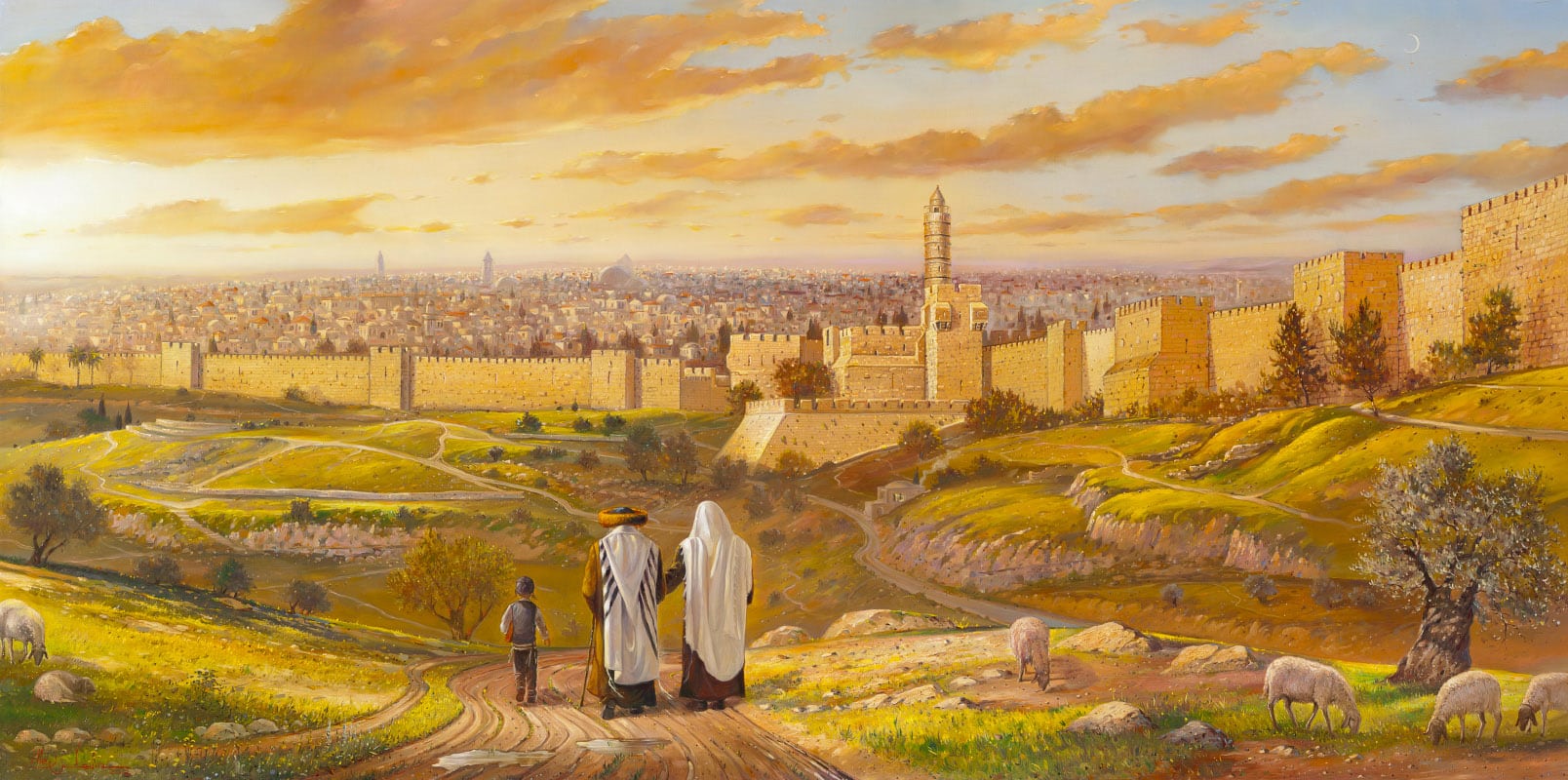
Exploring “Welcome to Jerusalem” by Alex Levin
When you first lay eyes on the artwork “Welcome to Jerusalem” by the renowned Israeli artist Alex Levin, it’s a challenge to pinpoint its genre at a glance. Is it a modern-day portrayal of Jerusalem or a glimpse into its distant past? Perhaps it offers a vision of the city’s future. As frequently observed in Alex’s paintings, history intertwines with the present, and reality merges with the dreams of a promising future, which religious Jews often beseech in their daily and festive prayers.
At the heart of the painting stand three individuals, likely representing three generations – perhaps the grandfather, father, and son. They could be Jerusalem natives, pilgrims, or repatriates. Their origins might trace back to any Russian town within the Pale of Settlement. Alternatively, could these three figures have escaped the horrors of the Holocaust, or are they the ethereal remnants of those who, tragically, couldn’t escape and perished amidst the once-welcoming landscapes of Europe? The attire adorning these figures is traditional, reminiscent of how orthodox Jews dressed two to three centuries ago in Eastern Europe, much like the attire seen in the streets of Bnei-Brak and Jerusalem’s Mea Shearim quarter today.
In Alex Levin’s visual narrative, Jerusalem remains nestled within the ancient walls of the Old City. There are no modern houses, paved roads, or cars; there’s no sense of tension or fear. Instead, the ever-moving clouds that drift above the city are bathed in the gentle light of dawn. This light ascends from the east, the very direction where the Temple once stood and where the Golden Gates of Mercy – “Shaar Harahamim” – stand. Centuries ago, the Muslim rulers of this sacred city ordered these gates sealed with a stone to prevent Meshiach’s arrival. But could it be an obstacle for destiny?
More likely, the light on the horizon symbolizes a new, third Eternal Temple, and the figures within the painting are moving toward it – walking and awaiting the one who will rebuild the Temple and return all Jews to the Holy Land. The boldest conjecture of all: one of the two men in the painting might be the Messiah himself, hence the title “Welcome to Jerusalem,” with Alex extending his welcome to this sacred city.
Yet, even if our suppositions prove incorrect, and the Messiah has not yet graced the walls of Jerusalem, there’s no reason to despair. Each one of us can journey to this hallowed city and experience it as it’s beautifully portrayed in Alex Levin’s artwork. All it takes is a deep desire to make it happen.
Alexander Riman
Researcher of the Jewish Heritage and Journalist, Israel
